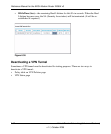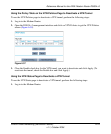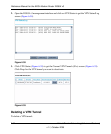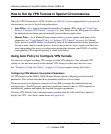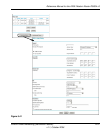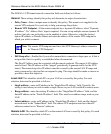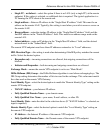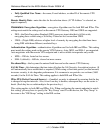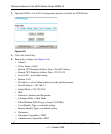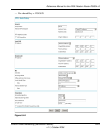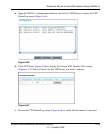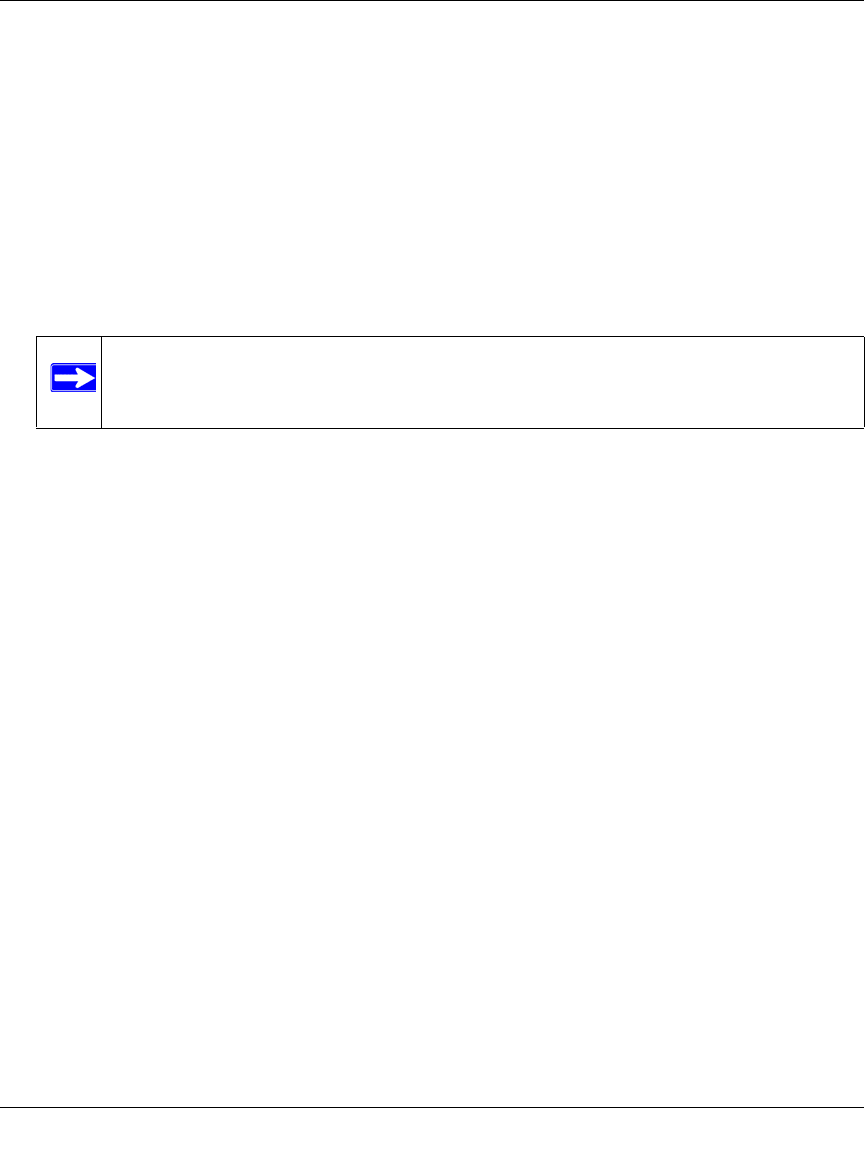
Reference Manual for the ADSL Modem Router DG834 v3
6-38 Virtual Private Networking (Advanced Feature)
v1.1, October 2006
The DG834 v3 VPN tunnel network connection fields are defined as follows:
General. These settings identify this policy and determine its major characteristics.
• Policy Name—Enter a unique name to identify this policy. This name is not supplied to the
remote VPN endpoint. It is used only to help you manage the policies.
• Remote VPN Endpoint—If the remote endpoint has a dynamic IP address, select "Dynamic
IP address". No "Address Data" input is required. You can set up multiple remote dynamic IP
policies, but only one such policy can be enabled at a time. Otherwise, select the desired
option (IP address or Domain Name) and enter the address of the remote VPN endpoint to
which you wish to connect.
• IKE Keep-alive—Enable this if you wish to ensure that a connection is kept open, or, if that is
not possible, that it is quickly re-established when disconnected.
The Ping IP Address must be associated with the remote endpoint. The remote LAN address
must be used. This IP address will be "pinged" periodically to generate traffic for the VPN
tunnel. The remote keep-alive IP address must be covered by the remote LAN IP range and
must correspond to a device that can respond to ping. The range should be made as narrow as
possible to meet this objective.
Local LAN. This identifies which PCs on your LAN are covered by this policy. For each
selection, data must be provided as follows:
• Single address—enter an IP address in the "Single/Start IP address" field. Typically, this
setting is used when you wish to make a single Server on your LAN available to remote users.
• Range address—enter the starting IP address in the "Single/Start IP address" field, and the
finish IP address in the "Finish IP address" field. This must be an address range used on your
LAN.
• Subnet address—enter an IP address in the "Single/Start IP address" field, and the desired
network mask in the "Subnet Mask" field. The remote VPN endpoint must have these IP
addresses entered as its "Remote" addresses.
Remote LAN. This identifies which PCs on the remote LAN are covered by this policy. For each
selection, data must be provided as follows:
Note: The remote VPN endpoint must have this VPN Gateway's address entered as
its "Remote VPN Endpoint".





